Why my Panasonic KX-TG5632 Cordless Telephone battery flashes or displays a number after full charge?
- AangelaallenSep 23, 2025
If you charged the battery fully, but a number continues to flash, the battery may need to be replaced with a new one.
Why my Panasonic KX-TG5632 Cordless Telephone battery flashes or displays a number after full charge?
If you charged the battery fully, but a number continues to flash, the battery may need to be replaced with a new one.
What to do if my Panasonic KX-TG5632 Cordless Telephone does not work?
If your Panasonic Cordless Telephone is not working, make sure the battery is installed correctly and fully charged. Check the connections. You can also try unplugging the base unit’s AC adapter to reset the unit, then reconnect it. If the handset has not been registered to the base unit, register the handset.
What to do if I cannot hear a dial tone on my Panasonic KX-TG5632?
If you cannot hear a dial tone on your Panasonic Cordless Telephone, first confirm that the telephone line cord is connected. If it is, disconnect the unit and connect a known working telephone. If the working telephone operates properly, contact service personnel to have the unit repaired. If the working telephone does not operate properly, contact your telephone company.
How to fix a blank handset display on Panasonic KX-TG5632 Cordless Telephone?
If the handset display is blank on your Panasonic Cordless Telephone, confirm that the battery is properly installed and fully charge the battery.
What to do if my Panasonic Cordless Telephone handset does not ring?
If your Panasonic Cordless Telephone handset does not ring, the ringer volume might be turned off. Adjust it.
What to do if I cannot dial the phone number edited in the caller list on my Panasonic KX-TG5632?
If you cannot dial the phone number edited in the caller list on your Panasonic Cordless Telephone, the phone number you dialed might have an incorrect edited pattern (for example, the long distance “1” or the area code is missing). Edit the phone number with another pattern.
Why is the handset or base unit of my Panasonic KX-TG5632 not announcing the caller names?
If the handset or base unit of your Panasonic Cordless Telephone is not announcing the displayed caller names, the ringer volume is turned off. Adjust it. Alternatively, the Talking Caller ID feature might be turned off; turn it on. The ring count for the answering system could be set to “2” or “Toll saver”; select a different setting.
Why the caller list or incoming phone numbers are not edited automatically on my Panasonic KX-TG5632?
If the caller list/incoming phone numbers are not edited automatically on your Panasonic Cordless Telephone, the Caller ID number auto edit feature is turned off. Turn it on and try again. You may also need to call back the edited number to activate Caller ID number auto edit.
Why I cannot redial by pressing redial on my Panasonic KX-TG5632?
If you cannot redial by pressing {REDIAL} on your Panasonic Cordless Telephone, it may be because the last number dialed was more than 48 digits long. If so, the number will not be redialed correctly; dial the number manually.
What to do if I cannot make a call on my Panasonic Cordless Telephone?
If you cannot make a call on your Panasonic Cordless Telephone, the dialing mode may be set incorrectly. Change the setting. Also, the base unit or another handset might be in use; try again later.
Introduces the Panasonic cordless telephone and lists compatible models.
Explains how to expand the phone system with accessory handsets.
Details the accessories included with the cordless phone models.
Lists optional accessories and replacement parts available for the phone.
Provides contact details for ordering accessories and obtaining support.
Lists essential safety precautions for using the cordless telephone to reduce risks.
Details battery safety warnings and medical device precautions regarding RF energy.
Guides on optimal base unit location, avoiding interference, and suitable environmental conditions.
Offers guidance on cleaning and maintaining the product's exterior surface.
Provides step-by-step instructions for connecting the AC adaptor and telephone line cord.
Explains how to connect the telephone line cord, including DSL considerations.
Guides users on connecting the AC adaptor and installing the battery in the handset.
Explains the battery charging process and expected performance based on usage.
Details the procedure for replacing the handset battery.
Identifies and explains the controls and indicators on the base unit.
Details handset controls, features, and charger connections.
Explains the various display items shown on the base unit and handset.
Covers symbols used in instructions and initial settings like language, dialing mode, date/time.
Explains making, answering, speakerphone, and redialing calls.
Describes answering calls and features like Hold, Mute, and Auto Talk.
Covers Flash, Call Waiting, Tone Dialing, Clarity Booster, and Voice Enhancer.
Guides on adding, editing, finding, and calling contacts.
Details how to copy phonebook entries between handsets.
Explains Caller ID compatibility, features, and how to view call history.
Details assigning unique ringers and indicator colors for callers.
Covers viewing, editing, and storing caller information, including auto edit.
Explains how to save caller details to the phonebook and erase call history.
Details how to customize phone features via programming codes.
Explains how to adjust the ringer volume for the base unit.
Provides an overview of capabilities, memory, and features.
Guides on system setup, recording greetings, and playback.
Explains listening via base unit, playback features, and erasing messages.
Guides on handset message access, volume, and commands.
Details remote access, commands, and voice guidance for the answering system.
Covers settings like remote code, ring count, and voice mail integration.
Explains how to set recording time per caller and manage message alerts.
Explains how Voice Mail works with the phone, access numbers, and tone detection.
Guides users on accessing and listening to Voice Mail messages.
Explains locating handsets and making intercom calls.
Details intercom calls, call transfers, and answering transferred calls.
Covers conducting conference calls and joining existing calls.
Explains the process for registering handsets to the base unit.
Provides instructions for mounting the base unit on a wall.
Details how to mount the charger securely on a wall.
Describes optional accessories like belt clips and headsets.
Lists common error messages and their solutions.
Provides solutions for general usage and programming issues.
Offers solutions for common problems related to calls and intercom functions.
Provides solutions for phonebook and Caller ID related issues.
Offers solutions for answering system and Voice Mail problems.
Addresses issues related to battery recharge and display blankness.
Contains FCC compliance, registration, and REN information.
Details FCC rules for digital devices, interference, and privacy.
Warns about RF exposure limits and provides methods to prevent interference.
Includes notices on product usage by region and ENERGY STAR compliance.
Lists the technical specifications for the base unit, handset, and charger.
Outlines the limited warranty coverage, terms, and mail-in service details.
Provides contact information for product support, accessory purchases, and service.
Offers resources for getting help with setup, operation, and product shipping.
Introduces the Panasonic cordless telephone and lists compatible models.
Explains how to expand the phone system with accessory handsets.
Details the accessories included with the cordless phone models.
Lists optional accessories and replacement parts available for the phone.
Provides contact details for ordering accessories and obtaining support.
Lists essential safety precautions for using the cordless telephone to reduce risks.
Details battery safety warnings and medical device precautions regarding RF energy.
Guides on optimal base unit location, avoiding interference, and suitable environmental conditions.
Offers guidance on cleaning and maintaining the product's exterior surface.
Provides step-by-step instructions for connecting the AC adaptor and telephone line cord.
Explains how to connect the telephone line cord, including DSL considerations.
Guides users on connecting the AC adaptor and installing the battery in the handset.
Explains the battery charging process and expected performance based on usage.
Details the procedure for replacing the handset battery.
Identifies and explains the controls and indicators on the base unit.
Details handset controls, features, and charger connections.
Explains the various display items shown on the base unit and handset.
Covers symbols used in instructions and initial settings like language, dialing mode, date/time.
Explains making, answering, speakerphone, and redialing calls.
Describes answering calls and features like Hold, Mute, and Auto Talk.
Covers Flash, Call Waiting, Tone Dialing, Clarity Booster, and Voice Enhancer.
Guides on adding, editing, finding, and calling contacts.
Details how to copy phonebook entries between handsets.
Explains Caller ID compatibility, features, and how to view call history.
Details assigning unique ringers and indicator colors for callers.
Covers viewing, editing, and storing caller information, including auto edit.
Explains how to save caller details to the phonebook and erase call history.
Details how to customize phone features via programming codes.
Explains how to adjust the ringer volume for the base unit.
Provides an overview of capabilities, memory, and features.
Guides on system setup, recording greetings, and playback.
Explains listening via base unit, playback features, and erasing messages.
Guides on handset message access, volume, and commands.
Details remote access, commands, and voice guidance for the answering system.
Covers settings like remote code, ring count, and voice mail integration.
Explains how to set recording time per caller and manage message alerts.
Explains how Voice Mail works with the phone, access numbers, and tone detection.
Guides users on accessing and listening to Voice Mail messages.
Explains locating handsets and making intercom calls.
Details intercom calls, call transfers, and answering transferred calls.
Covers conducting conference calls and joining existing calls.
Explains the process for registering handsets to the base unit.
Provides instructions for mounting the base unit on a wall.
Details how to mount the charger securely on a wall.
Describes optional accessories like belt clips and headsets.
Lists common error messages and their solutions.
Provides solutions for general usage and programming issues.
Offers solutions for common problems related to calls and intercom functions.
Provides solutions for phonebook and Caller ID related issues.
Offers solutions for answering system and Voice Mail problems.
Addresses issues related to battery recharge and display blankness.
Contains FCC compliance, registration, and REN information.
Details FCC rules for digital devices, interference, and privacy.
Warns about RF exposure limits and provides methods to prevent interference.
Includes notices on product usage by region and ENERGY STAR compliance.
Lists the technical specifications for the base unit, handset, and charger.
Outlines the limited warranty coverage, terms, and mail-in service details.
Provides contact information for product support, accessory purchases, and service.
Offers resources for getting help with setup, operation, and product shipping.
| Number of Handsets | 2 |
|---|---|
| Caller ID | Yes |
| Standby Time | Up to 7 days |
| Range | Up to 1000 feet |
| Answering Machine | Yes |
| Frequency | 1.9 GHz |
| Speakerphone | Yes |
| Headset Jack | Yes |
| Call Waiting | Yes |
| Intercom | Yes |
| Backlit Display | Yes |
| Power Backup | No |
| Type | Cordless Phone |
| Phonebook Capacity | 50 |
| Expandable | Yes |
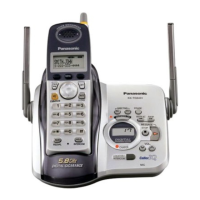
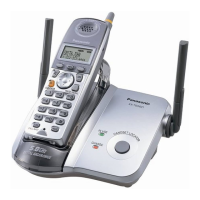


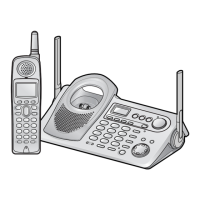

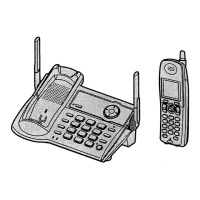
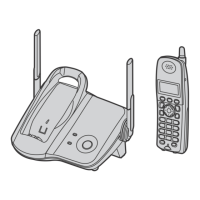


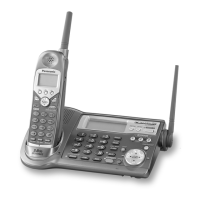

